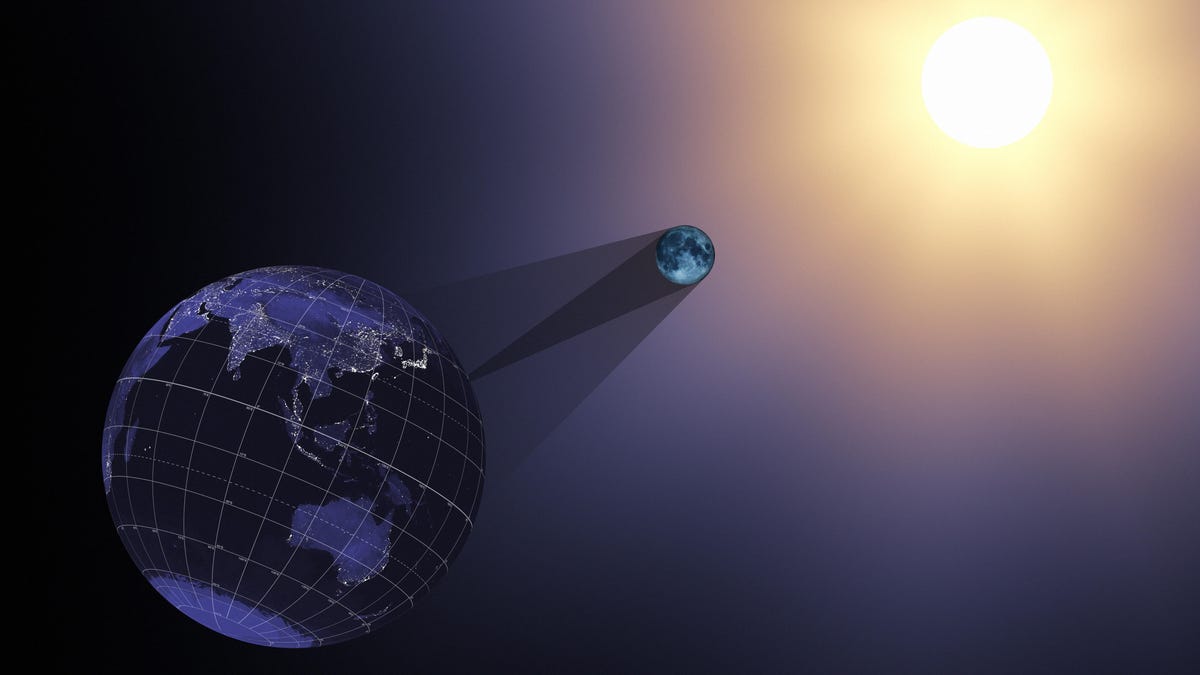Solar eclipse 101: This is why the sun disappears
The US is gearing up for a solar show-stopper on Aug. 21, so take a moment to refresh your eclipse knowledge.
Aug. 21 will be a big day for the US when it's treated to a total solar eclipse, the first to hit the mainland in nearly 40 years. So you're forgiven if your eclipse knowledge is a little fuzzy. The scientific explanation behind this fascinating event involves our moon, the sun and the power of a shadow.
At its heart, a solar eclipse is what happens when the moon slips between the Earth and the sun, blocking out the light from our closest star by casting a long shadow onto our planet. This happens when the orbits of the Earth and moon align with the sun.
Depending on your location and where the shadow falls, the moon can block the sun entirely, or just take a partial bite out of the star's bright disk. NASA posted a handy animation in June showing how the moon causes a shadow to fall:
In the video, you will see the moon's shadow represented by two concentric cones. The smaller, central cone is known as the "umbra," while the larger, lighter cone is called the "penumbra." Anyone in the path of the umbra will see the total eclipse. Those in the path of the penumbra will see a partial eclipse.
So how does the relatively tiny moon block out the big sun? NASA refers to it as a "cosmic quirk of geometry." The sun is massively bigger than the moon, but our star is so far away from Earth that the much closer moon can cover it up when seen from our planet-bound perspective. You can replicate this by setting a round object, like a basketball or dinner plate, at a distance. Hold up a coin and step back until the coin appears to hide the ball.
The line across the Earth where the moon casts a solid shadow, completely blocking the sun, is known as the path of totality. For the August eclipse, that path will cross the continental US from Oregon on the West Coast to South Carolina on the East Coast. The day will turn to twilight for up to two minutes and 40 seconds. If you're outside this path, you will see a partial eclipse.
This NASA illustration shows the path of totality (marked by the darker line with the black circles) and the percentage of the eclipse visible in bands radiating from the main line of the moon's shadow.
NASA marks out the path of the Aug. 21 solar eclipse.
"In any given location on Earth, a total eclipse happens only once every hundred years or so, though for selected locations they can occur as little as a few years apart," NASA notes. The August total eclipse is hitting superstar status thanks to its high-profile path across the US. This will be the first coast-to-coast eclipse since 1918.
NASA lunar scientist Richard Vondrak has a poetic take on the solar eclipse. "A total eclipse is a dance with three partners: the moon, the sun and Earth," he says. "It can only happen when there is an exquisite alignment of the moon and the sun in our sky." This is how the simple act of casting a shadow becomes an epic celestial event.
Does the Mac still matter? Apple execs tell why the MacBook Pro was over four years in the making, and why we should care.
Tech Enabled: CNET chronicles tech's role in providing new kinds of accessibility.


